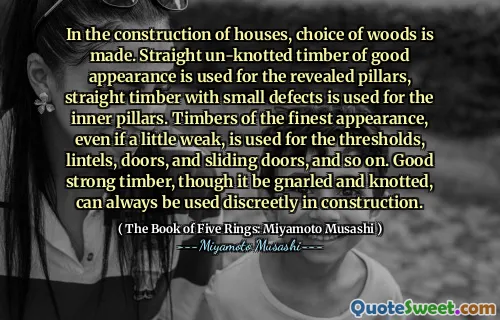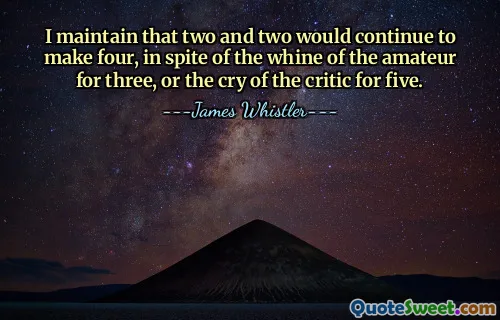
In the construction of houses, choice of woods is made. Straight un-knotted timber of good appearance is used for the revealed pillars, straight timber with small defects is used for the inner pillars. Timbers of the finest appearance, even if a little weak, is used for the thresholds, lintels, doors, and sliding doors, and so on. Good strong timber, though it be gnarled and knotted, can always be used discreetly in construction.
This passage employs the metaphor of selecting wood for building a house to convey deeper insights about quality, utility, and judgment. It highlights that not all wood is the same and that each piece has its place depending on its attributes. The emphasis on choosing straight, un-knotted timber for the visible pillars symbolizes the importance of aesthetics and strength where appearance and durability matter most. Conversely, wood with minor defects is still useful, but it is better placed in less visible areas where imperfections won't undermine the overall structure’s integrity or beauty. This analogy resonates beyond construction—it teaches the value of discernment and acknowledgment of imperfections
Musashi’s delineation reminds us that even weaker-looking or flawed elements perform essential roles. The finest-appearing timber, even if somewhat fragile, is entrusted with functions crucial for function and symbolic thresholds like doors and lintels. Meanwhile, stronger yet visually flawed wood is pragmatically and discreetly embedded, emphasizing practical strength over superficial perfection.
This layered approach encourages us to appreciate diversity and utilize strengths thoughtfully rather than rejecting materials or people simply because they are not flawless. It speaks to the wisdom of recognizing and deploying qualities situationally to forge something whole and enduring. The quote aligns brilliantly with the overarching philosophy of balance, flexibility, and perceptive strategy in Musashi’s "The Book of Five Rings." It invites reflection on the nuanced interplay between outward appearance, intrinsic value, and function in life and art.






